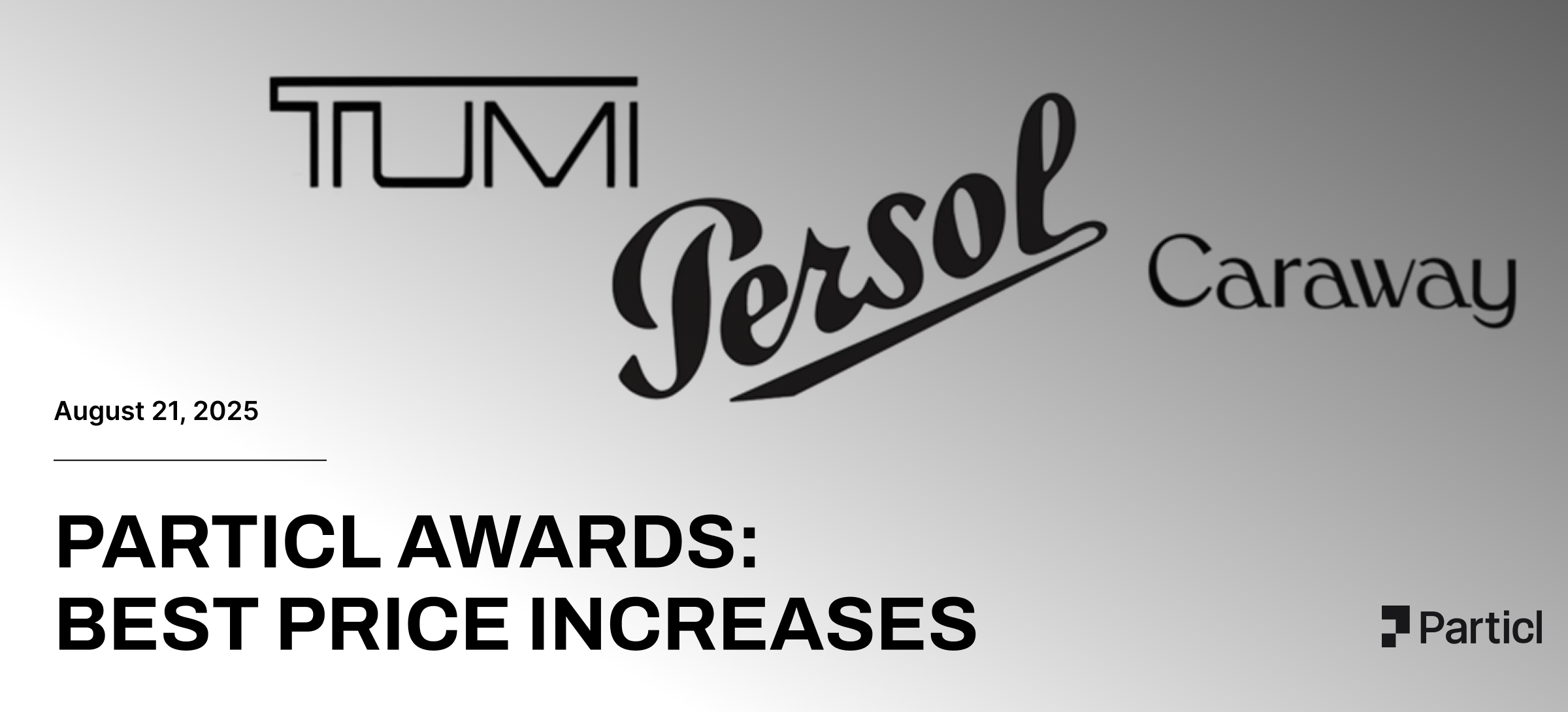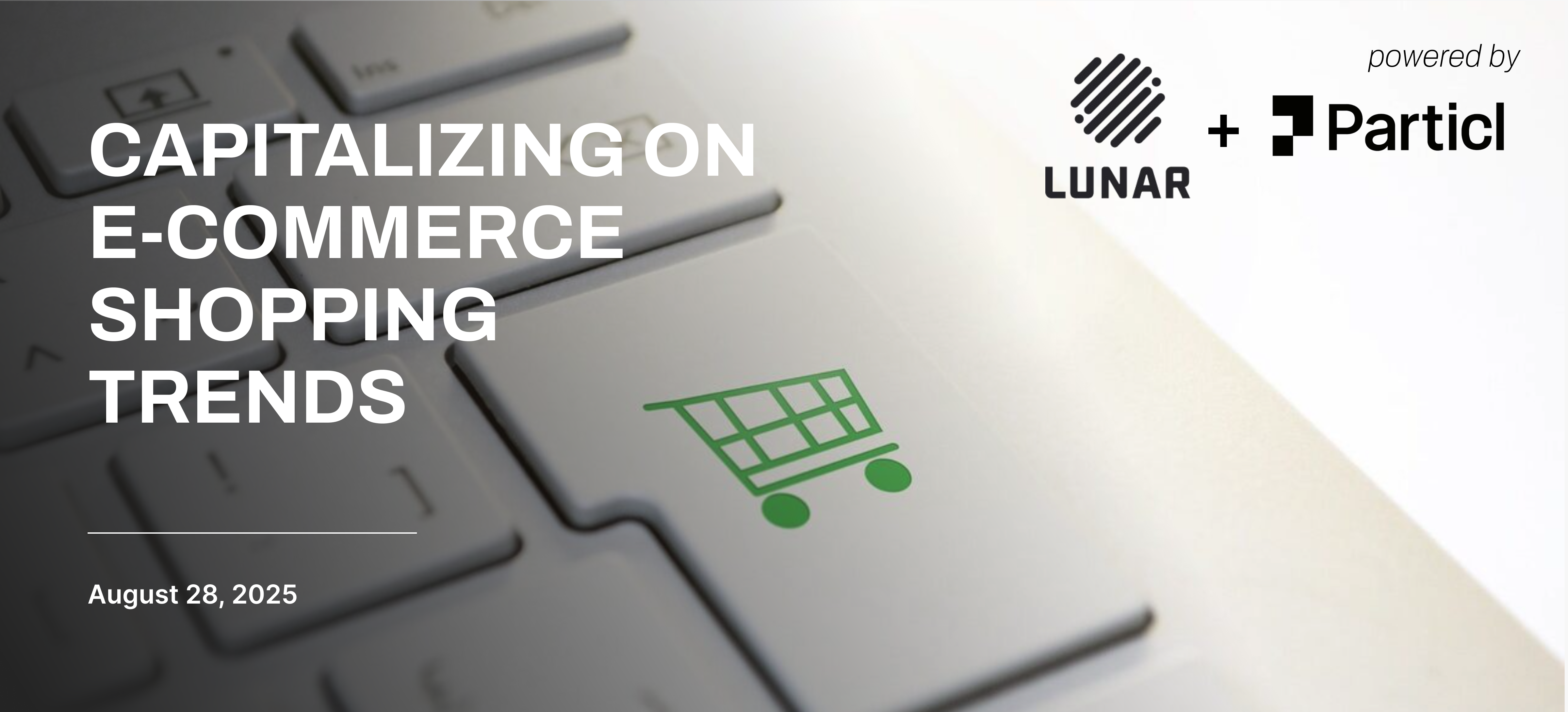The Anatomy of a High-Converting Shopify Store

Powered by Particl data, in collaboration with Platter
Introduction
Driving traffic is no longer enough. Rising acquisition costs and tightening margins have forced brands to focus on what happens after a shopper arrives on-site. The storefront itself has become one of the most important growth levers in e-commerce.
Platter specializes in building high-performing Shopify storefronts, and their results speak for themselves. Across dozens of brands, the average outcome has been a 15–20% increase in conversion rates within weeks of launch, often paired with higher average order values and significant cost savings.
Paired with Particl’s market data on leading DTC brands, the evidence is consistent: the most successful Shopify stores win because they execute four pillars exceptionally well: navigation, product pages, trust, and upselling.
Pillar 1: Navigation That Funnels Intent
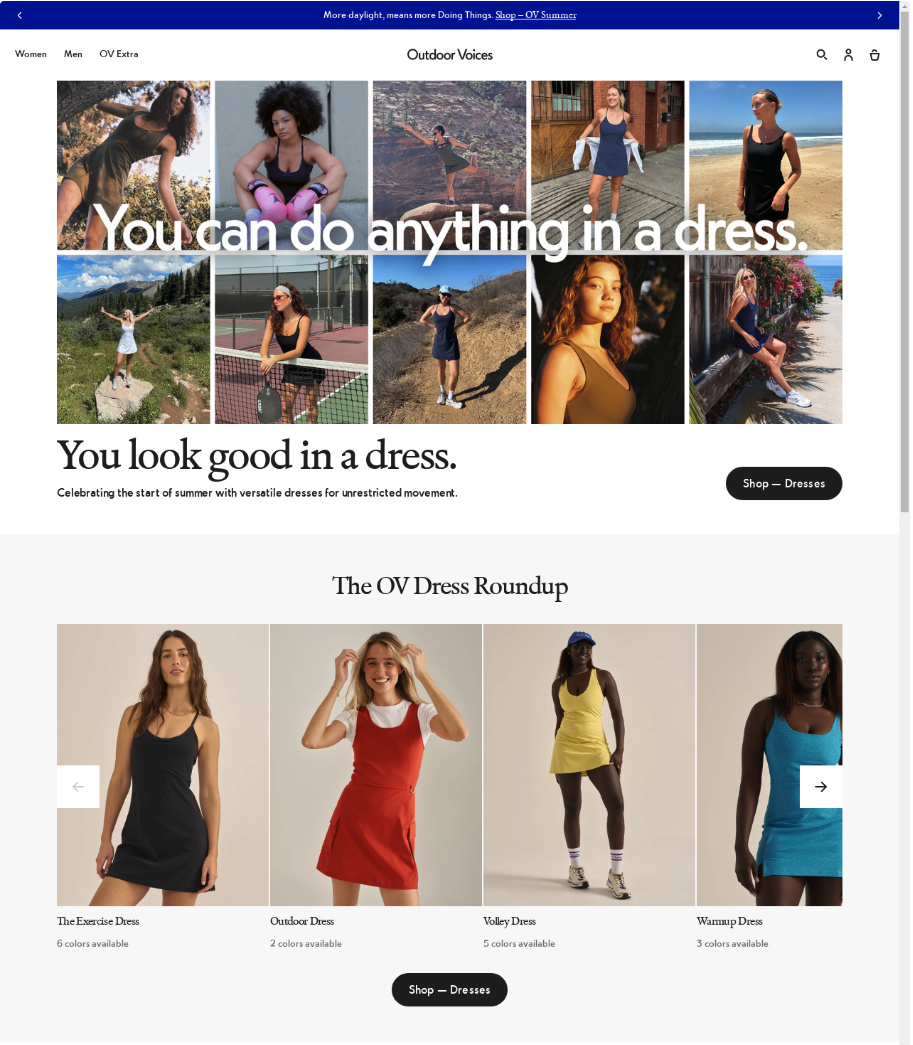
Outdoor Voices keeps its navigation intentionally simple, with pared-down categories like “Tops, Bottoms, Dresses, Kits.” The “Kits” strategy in particular helps shoppers make faster decisions while raising order values, since bundling eliminates choice paralysis and makes outfitting straightforward.
Particl data shows how leggings and the Exercise Dress dominate OV’s sales mix, proving that simplified navigation not only improves the shopping experience but also channels demand into hero categories. Brands that have modernized their navigation structures through Platter’s case study learnings have recorded immediate lifts in sales within the first month of launch.
Outdoor Voices Dresses Revenue (H1 2025)
Monthly online sales revenue for Outdoor Voices dresses, Jan–Jun 2025
Takeaway: A clear, uncluttered site structure is one of the fastest paths to higher conversion, particularly when it is catered to a category strength and aligned with seasonality.
Pillar 2: Product Pages That Sell Themselves
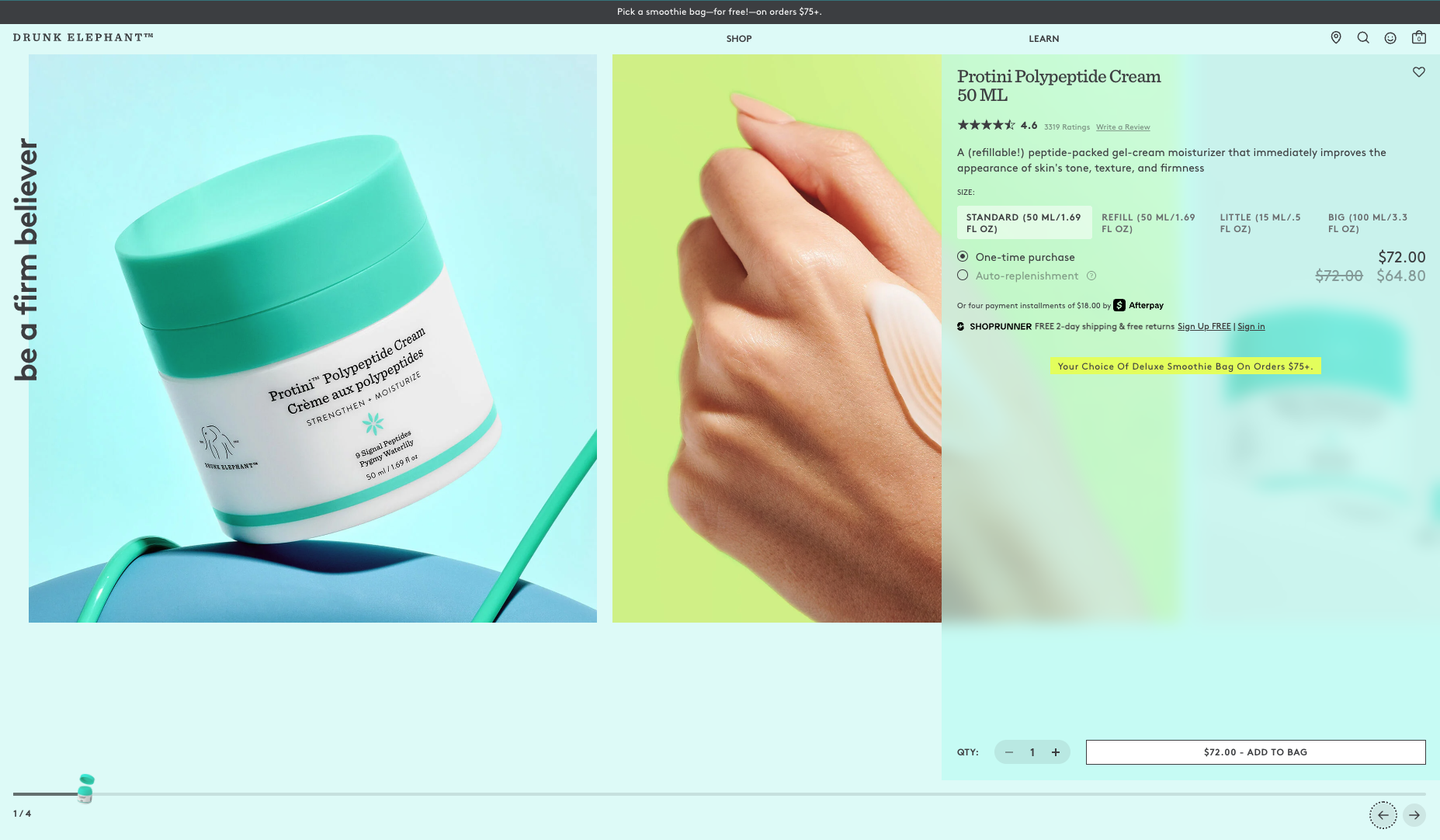
For many brands, the PDP is where hesitation kills conversion. Drunk Elephant demonstrates how to eliminate that hesitation. Their product pages combine strong imagery, benefit-driven copy, ingredient transparency, and thousands of community reviews. This balance of education and persuasion allows shoppers to act quickly without leaving the page to seek more information.
Particl data shows consistent leadership from products like Protini Cream and C-Firma, despite a crowded and competitive skincare landscape. Similar features integrated into other brands’ storefronts through Platter’s case study learnings have delivered conversion gains of up to 20% year-over-year.
Drunk Elephant Online Sales Revenue (H1 Comparison): ~20% increase YoY
Year-over-year comparison of Drunk Elephant online sales revenue, Jan–Jun
Takeaway: Rich, benefit-led product pages persuade customers to buy and lay the foundation for repeat purchase.
Pillar 3: Trust Builders That Increase Conversion and Retention
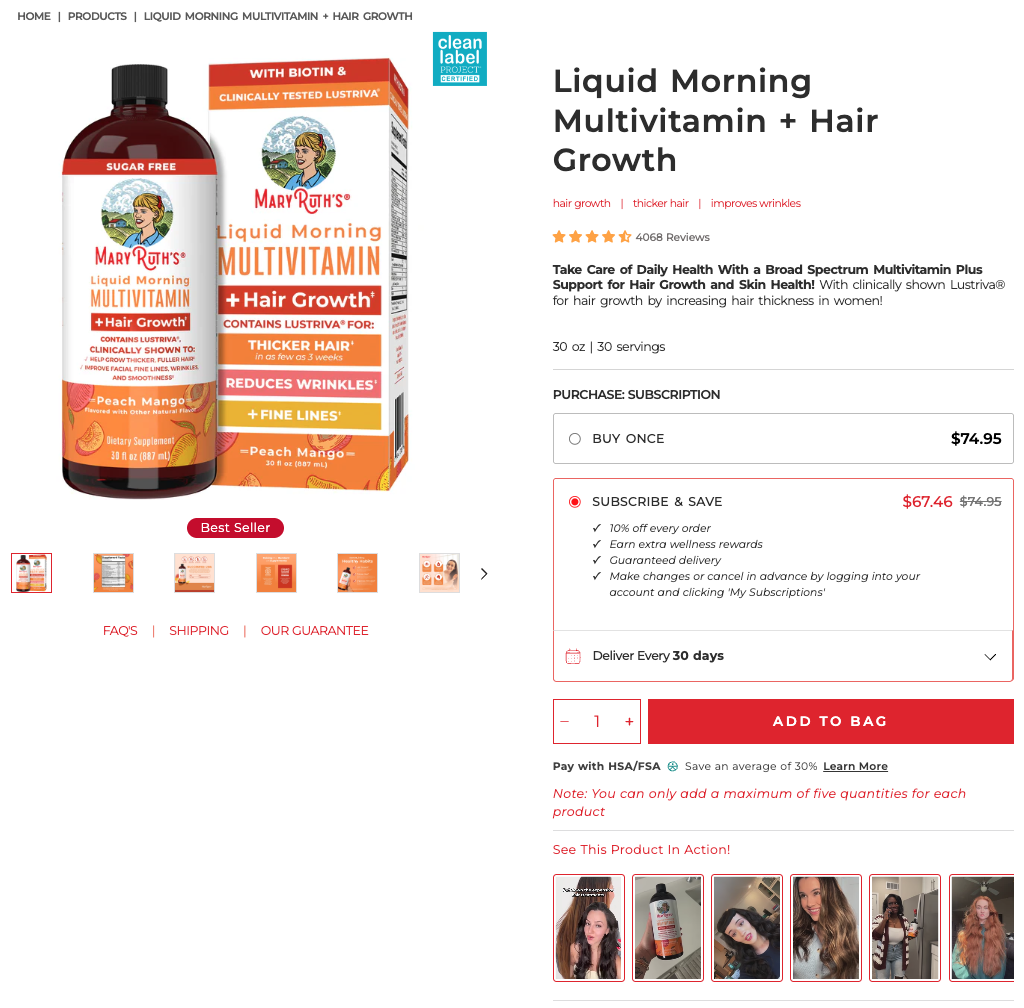
Supplements are one of the most trust-sensitive categories in consumer goods. MaryRuth Organics succeeds by putting credibility front and center: certifications like Clean Label, USDA Organic, Vegan, and Non-GMO, approachable brand storytelling, and a strong layer of reviews. MaryRuth Organics takes it a step further by adding a "See This Product in Action" section just beneath the "Add to Bag" button. The section features video testimonials from customers, further reassuring the shopper.
Particl data highlights sustained category leadership in multivitamins and probiotics, reinforcing that credibility translates directly into sales and loyalty. In similar storefronts, changes inspired by Platter’s case study learnings — such as simplifying shipping and returns messaging or surfacing product guarantees — have driven measurable improvements in both conversion and repeat purchase.
MaryRuth Organics Online Sales Revenue (H1 Comparison): ~62% increase YoY
Year-over-year comparison of MaryRuth Organics online sales revenue, Jan–Jun
Takeaway: Transparency, certifications, and community validation reduce hesitation and unlock higher lifetime value.
Pillar 4: Upselling and Cross-Selling That Increase AOV
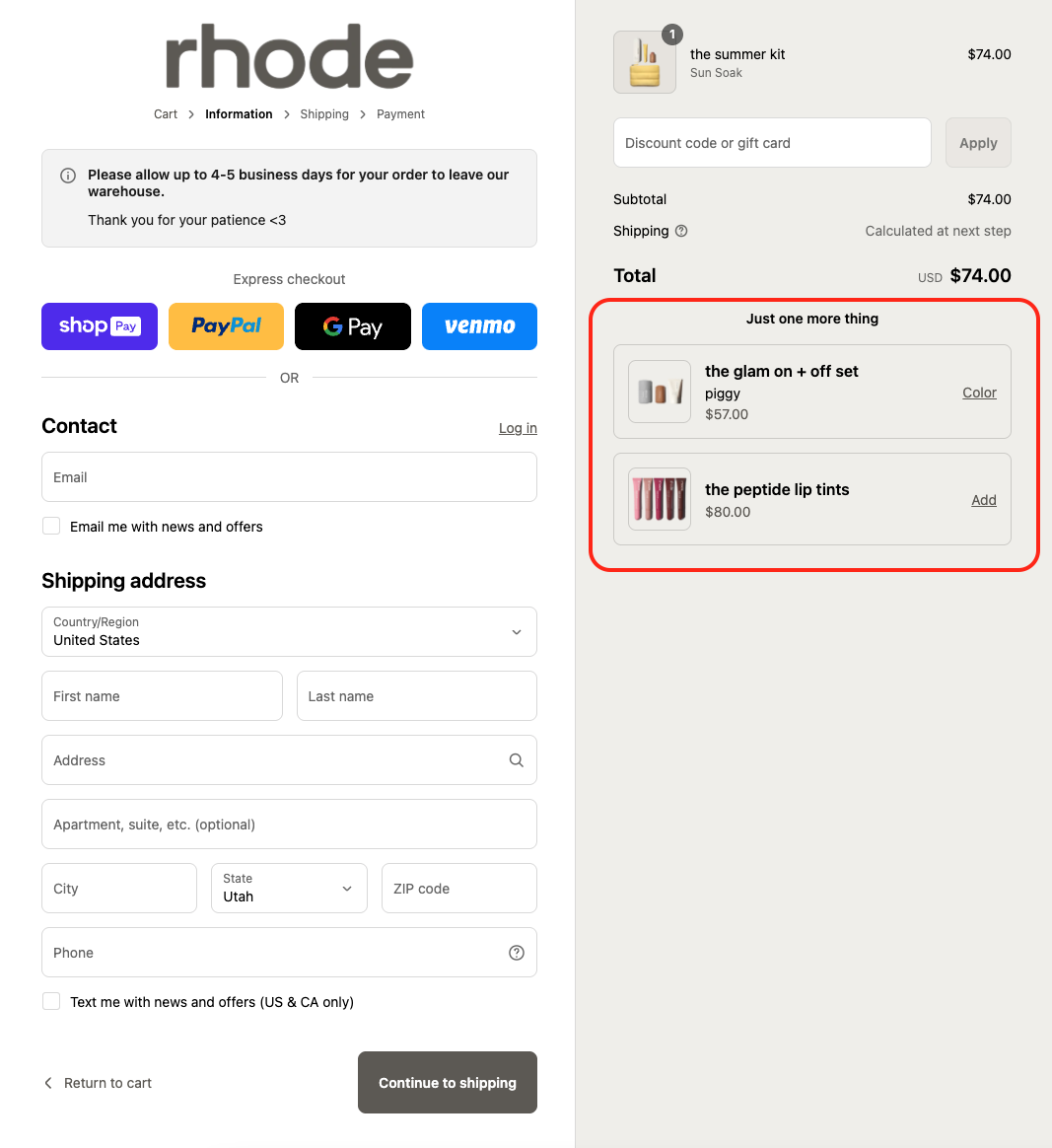
Once the fundamentals of navigation, PDPs, and trust are in place, the most efficient lever for growth is increasing cart size. Rhode Skin shows how to make this seamless, weaving upsells and bundles into every stage of the customer journey. PDPs guide shoppers toward full routines, cart drawers surface subtle add-ons, and checkout nudges frame lightweight extras at the moment of purchase.
From January to July 2025, Particl data shows revenue from Rhode’s bundled products rose 2.7×, with seasonal kits and curated edits like The Pink Edit consistently ranking among the brand’s top sellers. Across other high-performing storefronts, adopting similar approaches has lifted AOV by 4–10% year-over-year, often without any reliance on discounting.
Rhode Skin Online Sales Revenue (H1 Comparison): ~286% increase YoY
Year-over-year comparison of Rhode Skin online sales revenue, Jan–Jun
Takeaway: Smart upsells and curated bundles systematically increase order values and protect margins.
Conclusion
Customers today are more selective with their purchases, wallets are tighter, and brands are operating with thinner margins. That combination has made storefront curation and conversion more important than ever. The ability to turn visits into purchases is not just a lever for growth, it is the foundation of sustainable performance.
Platter has emerged as a leader in curating Shopify experiences that consistently deliver 15–20% higher conversion rates while cutting operational complexity and costs. Particl’s data confirms that when brands apply the four pillars (i.e., navigation, PDP optimization, trust building, and upselling), they outperform their peers across categories from apparel to beauty to wellness.
The path forward for brands is clearer through the lens of Particl's data: execution on these four storefront fundamentals translates directly into stronger margins, higher conversion, and scalable growth.
